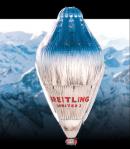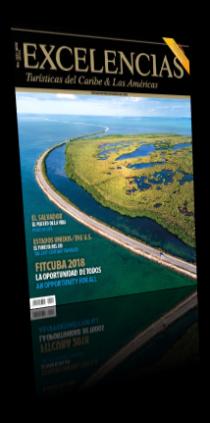- A motley sky
BALLOON FESTIVALS, LIKE THE ONE THE MEXICAN CITY OF LEON HOLDS EVERY YEAR, HAVE TURNED OUT TO BE GENUINE TOURIST ATTRACTIONS
Over the past ten years, a four-day event comes around every November: the International Balloon Festival (FIG is the Spanish acronym). In the course of that event, daybreaks are different on the shores of a manmade lake called Presa del Papalote (The Kite Dam) at the Metropolitan Ecological Park, right in the Mexican city of Leon.
Little by little, a multicolor mosaic begins to reflect in the crystal-clear waters of the lake, shaping up a landscape that will have the sky as the backdrop of choice as hours tick by. And then it’s time to look up and feast eyes on a one-and-only experience for those who are in attendance ready to stare at a grand popular show that has turned the capital of the state of Guanajuato into a mandatory reference among air balloon enthusiasts.
A grand total of 27 balloons took flight during the inaugural edition back in 2002, quite a humble number if stacked up against the 200 balloons from 23 countries that took part in the latest festival of the heights.
The figures bear out without the slightest doubt why Leon’s is by far the number-one air balloon event held in Latin America, and why it has become the world’s third-largest destination for this modality, just trailing behind the ones organized in Albuquerque (U.S.) and the Festival Château d’Oex in Switzerland.
With a turnout of little more than half a million spectators, the 2017 edition brought along some 3.5 million local and foreign visitors during the first 16 years, in which as many as 1,800 air balloons of different designs and sizes have lifted up.
According to statistics revealed by the organizers, FIG 2017 and its collateral activities churned out some 700 million Mexican pesos worth of revenues for the local economy, a figure large enough for a region that has put its smart money on travel as one of its top income sources.
But, what makes this place such a coveted location for air balloon enthusiasts? Those who are in the know say that tradition does count. As far back as in the year 1842, Don Benito Leon de Acosta –a forerunner of air ballooning in Mexico- was the first man ever to fly over this region in a balloon. Some people point to the lovely landscapes that can be made out from the heights and to peerless atmospheric conditions of Leon, with very soft airstreams at certain times of the day that even create some sort of “wind box” with downdrafts that let this peculiar means of transportation touch down smoothly on its starting point.
However, the familiar ambience is what has really given FIG one of the most anticipating details among participants. In addition to experiencing an incomparable feeling, FIG offers a program of cultural and sport activities that comprises courses, exhibitions, contests and gastronomic fairs.
For that and other reasons, several countries in the region are now taking baby steps in the organization of their own festivals. In fact, in recent years the most amazing air balloons have begun to take flight in Argentina, Colombia and Chile, and even more events of this kind have popped up in other parts of Mexico.
And make no mistakes about it; more and more destinations will be in the mix to take advantage of all the potentials air balloons have to offer, something that brings delight to both the ones who fly in them, eager to take a glimpse at life from a different perspective, and those on the ground that gaze at them as they lift up in the air and paint the sky with colors other than blue.
A Great Desire
Even though some recent studies indicate that Brazilian priest Bartolomeu de Gusmao was the first man ever to ride in an air balloon back in 1709, right before the court of King Juan V of Portugal, the most accepted version points to French brothers Jacques Étienne and Joseph Michel De Montgolfire as the true pioneers in this respect.
Their first public demonstration is dated in June 1882, when they steered a 10-meter-round balloon of 226 kilograms, made of varnished paper and cloth, up 1,800 meters over a couple of kilometers.
A year later, France’s Jean Francois Pilatre de Rozier and Francois Laurent were registered as the first air balloon crew members as they took off from La Muette Park in the vicinity of Paris and lifted 1,000 meters during a 25-minute flight that landed some 10 kilometers farther.
Since then, the evolution of this modality has been nonstop, giving human beings the opportunity to make one of their greatest dreams come true: touring around the planet in an air balloon. That happened on March 20, 1999, when
Bertrand Piccard from Switzerland and Brian Jones from the UK, aboard the Brietling Orbiter 3, touched down in Egypt following a grand tour around the planet. They had taken off in Switzerland and flew nonstop for a staggering 46,759 km in the span of 20 days.
Sophistications
Today, the construction of air balloons is more sophisticated. Most of them lift up thanks to the hot air given out by the propane burners attached to the opening. The covering or wrapping is made of synthetic fabric treated with polyurethane in a bid to minimize leaks. A basket hangs from the balloon, carrying the pilot and the passengers.
Once it’s up in the air, the balloon can soar higher by letting more hot air out of the burners. For coming down, the pilot should either wait for the hot air to cool down or just open a valve on the upper side, which eventually releases the hot air.





























































































































